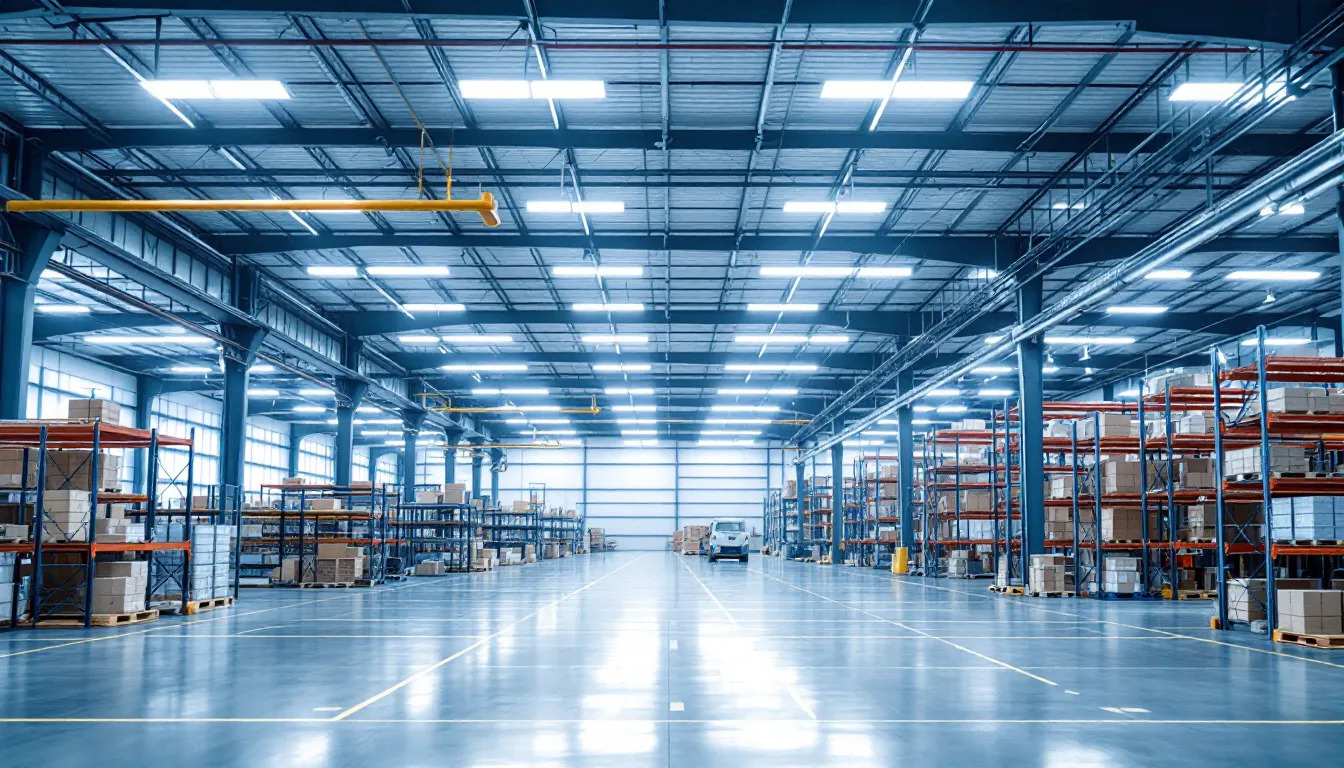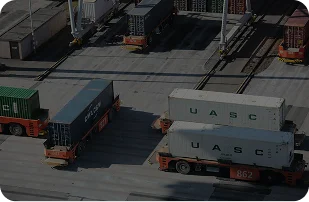Warehouse Cost: Complete Breakdown of Construction and Operational Expenses

Building or operating a warehouse represents one of your largest business investments, with costs that extend far beyond initial construction. Whether you’re evaluating warehouse real estate options or considering commercial warehouse storage alternatives, understanding the complete cost picture is crucial for making informed decisions that protect your bottom line.
We’ll break down every cost component, from construction to ongoing warehouse services, so you can budget accurately and explore cost-effective solutions that match your specific needs.
Total Warehouse Cost Model: CapEx to OpEx Reality
Your warehouse investment follows a two-phase cost structure that many businesses underestimate. Construction costs represent your initial capital expenditure, typically ranging from $20-60 per square foot, depending on size and complexity. However, operational expenses over 12-15 years often exceed your initial construction investment.
A complete total cost of ownership (TCO) model for a 50,000 square foot storage facility might look like this: $1.5-2.5 million in construction costs, plus $6-12 million in operational expenses over 15 years. This includes labor (your largest ongoing cost), utilities, insurance, maintenance, and essential fulfillment services needed to operate effectively.
The scope and assumptions dramatically affect these numbers. Standard 24-foot ceiling height with basic climate control costs significantly less than specialized facilities requiring refrigeration for the food industry or high-security areas for valuable consumer goods.
Smart businesses compare these total costs against third-party logistics partnerships that can provide professional warehouse services without the massive capital commitment.
Construction Costs: What You Actually Pay
Construction costs breakdown into several key components that you need to budget for separately. The core build includes foundation, structural shell, roofing, and any mezzanine levels, typically accounting for 60-70% of your total construction budget.
Systems and code compliance add substantial costs through fire suppression systems ($3-7 per square foot), life safety equipment, and egress requirements. These aren’t optional because they’re essential for regulatory approval and insurance coverage.

https://invwhs.com/wp-content/uploads/2025/09/image2-4.png
Fit-out essentials transform your building shell into a functional storage facility. Loading docks cost $15,000-25,000 each, specialized flooring adds $2-4 per square foot, and electrical systems capable of supporting warehouse equipment require significant upfront investment. Don’t forget racking readiness as proper power distribution and ceiling clearances for your storage space configuration.
Hidden costs catch most business owners unprepared. Site preparation varies dramatically based on soil conditions and can add $50,000-200,000 to projects. Utility connections, permitting fees, and construction contingencies typically add 15-25% to your base construction costs.
Operational Costs & Warehouse Services
Labor represents 60-65% of your operational expenses and directly impacts your ability to provide quality warehouse services. Skilled workers capable of inventory management, order processing, and specialized services command higher wages but deliver better customer satisfaction through accuracy and efficiency.
Utilities range from $0.50-1.50 per square foot annually for standard storage, but climate-controlled facilities for the food industry or other temperature-sensitive consumer goods can double these costs. Factor in seasonal variations and local energy rates when budgeting.
Insurance, maintenance, and property taxes add another $1-3 per square foot annually. These costs vary by location and stored product value but represent ongoing expenses that affect your long-term viability.
Essential fulfillment services that affect your costs include storage fees (typically $4-12 per pallet monthly), pick and pack operations ($3-8 per order), and additional services like kitting, labeling, and reverse logistics for returns processing. Each service adds value but increases operational complexity and costs.
Many businesses discover that professional 3PL services provide these capabilities more cost-effectively than building internal operations, especially when factoring in technology investments and staffing challenges.
Storage & Handling Economics
Commercial warehouse storage costs depend heavily on your racking configuration and layout efficiency. Pallet positions typically cost $150-400 each to install, but proper planning can maximize your storage space utilization and improve return on investment.
Clear height above 24 feet provides significant storage capacity benefits but requires stronger structural systems that increase construction costs. Calculate the cost per stored unit across different height scenarios to determine optimal building specifications.
Throughput and picking methods dramatically impact operational costs. Batch picking, zone picking, and wave picking each offer different cost profiles depending on your order processing volume and complexity. The right approach depends on your specific needs and order patterns.
Technology investments in warehouse management systems, barcode scanners, and material handling equipment require substantial upfront costs but often pay back through improved efficiency and inventory control. Modern warehouse software can reduce labor costs while improving accuracy and customer satisfaction.
Location & Real Estate Strategy
Warehouse real estate costs vary dramatically by market, with West Coast and Northeast locations commanding 20-40% premiums over Southern and Midwest markets. However, location affects more than just real estate costs. Consider labor availability, shipping costs, and access to your customer base.
The lease versus buy decision impacts your cash flow and flexibility. Leasing provides lower upfront costs and operational flexibility, while ownership builds equity but requires significant capital investment. Most businesses find leasing advantageous for the first 7-10 years, depending on local market conditions.
Site selection criteria that affect the total cost of ownership include proximity to major shipping carriers, access to freight lanes, and local labor markets. A slightly higher-cost location with better transportation access often reduces overall supply chain costs.
Consider how location affects your ability to provide fast delivery and customer satisfaction. Strategic warehouse placement can reduce shipping costs and improve delivery times, creating competitive advantages that justify higher real estate costs.
Cost Drivers & Benchmarks
Building height beyond 30 feet requires specialized engineering and stronger structural systems that can increase costs by 15-25%. However, the additional storage space often justifies these costs for high-volume operations.
Specialized spaces for temperature control, hazardous materials, or high-security applications add $10-20 per square foot to construction costs and significantly increase operational expenses. The food industry and pharmaceutical storage require these specialized services despite higher costs.
Material and labor cost volatility can impact construction budgets by 10-20% depending on market conditions and project timing. Schedule delays during peak construction seasons or adverse weather can compound these cost increases.
Key benchmarks for planning include $35-55 per square foot for construction, $200-350 per pallet position for racking, and $4-10 per order for pick and pack services. Use these ranges for initial planning, but get detailed quotes for accurate budgeting.
Proven Ways to Reduce Costs
Design optimization can reduce construction costs by 20-30% without sacrificing functionality. Standardize bay sizes, right-size your dock doors, and avoid over-specification of systems you don’t need for your warehouse type.
Procurement strategies, including competitive bidding and value engineering, can significantly reduce costs. Pre-engineered metal buildings work well for standard applications and cost 20-30% less than custom steel construction.

Operational savings come from energy-efficient lighting, optimized slotting for picking efficiency, cross-trained staff, and negotiated shipping contracts. Strategic warehousing approaches can reduce costs while improving service levels.
Consider automation carefully—simple conveyors and pick-to-light systems often provide better return on investment than complex robotics for most operations. Focus on solutions that address your specific bottlenecks and volume requirements.
Planning, Timeline & Cash Flow
Permit approval processes can add 2-6 months to project timelines and affect your cash flow planning. Start permit applications early and budget for potential delays that could impact your operational start date.
Plan your ramp-up period carefully, including technology installation, staff training, and process stabilization. New facilities typically require 3-6 months to reach full operational efficiency, affecting your revenue projections.
Budget with 10-15% contingencies for unexpected costs and changes. Construction projects consistently encounter surprises that can derail budgets and timelines without proper planning.
Many businesses find that partnering with experienced 3PL providers eliminates these risks while providing immediate access to professional warehouse services and technology systems.
Warehouse Cost FAQs
What’s the cheapest way to build a warehouse?
Pre-engineered metal buildings in rural locations offer the lowest construction costs at $20-35 per square foot. However, consider whether professional warehouse services might provide better value without the capital investment and operational complexity.
How much does a 50,000 square foot warehouse cost annually to operate?
Annual operational costs typically range from $500,000-1.2 million, with labor representing the largest expense. Understanding the true cost of self-fulfillment helps you evaluate alternatives that might better serve your business.
Should I lease or buy warehouse space?
Leasing typically offers better cash flow and flexibility for the first 7-10 years. Buying makes sense for established operations with long-term location requirements and available capital.
What unexpected costs should I budget for?
Site conditions, permit delays, and material price fluctuations commonly add 15-25% to construction budgets. Always include substantial contingencies and consider alternatives that eliminate these risks.
How can I accurately estimate warehouse costs?
Get detailed quotes from multiple sources and factor in all operational costs, including labor, technology, and ongoing services. Consider consulting with experienced fulfillment partners who can provide realistic cost comparisons and alternative solutions.








































